2012
Harvest
2012
Harvest
Sicily
NORTHERN SLOPES OF THE ETNA VOLCANO (Province of Catania)
Marco de Grazia owner of Tenuta delle Terre Nere (Etna Rosso DOC, Etna Bianco DOC, Etna Rosato DOC): “The 2012 vintage on the northern slopes of Etna, where we have our estate and our vineyards was remarkable in many ways. The most remarkable fact which powerfully influenced the wines, however, was the absolute lack of rain from late May through early November. A unique condition, the equal of which not even the very old vignerons could remember. Although we suffered from a sever drought, however, it is important to note that, thanks to exceptionally good vineyard management none of our vines, not even the young ones, were stressed. Furthermore, fortunately the summer months were quite mild and never overly hot. All this brought about several consequences. For one thing, the grapes were absolutely healthy. Furthermore, the concentration of the grapes was unprecedented. The skins became remarkably thick in order to protect the little juice that was present in the grapes. Although the grape load was average, the weight of the grapes was so light given the little juice that production was down 40%! Having harvested exceptionally fine grapes, but exceptionally concentrated ones with a very high percentage of skin with respect to juice, and with high sugar contents, the risk was over extraction during fermentation-maceration. Therefore, we had to be very careful and most delicate in our extraction techniques – less pumping over, less punching down, shorter and cooler macerations – in order to have harmonious wines that would not be overly tannic and unbalanced (because too much of a good thing can be counterproductive). Happily we were very successful, and we released among the finest wines we ever made. So much so that we were rewarded by the best press coverage ever.”
SIRACUSA: The springtime was short, the summer was very dry.
Azienda Agricola Pupillo (Moscato di Siracusa DOC, Sicilia IGT): “….We started picking Moscato Bianco for the sparkling wines on the 26th of July and we gradually picked all the Moscato till the end of August for the dry, demi sec and sweet versions. At the end of August we picked the Catarratto grapes. During the first week of September we picked Nero d’Avola for the production of Rosato, followed by the Nero d’Avola for the production of “Re Federico” and Cabernet Sauvignon was the last varietal to be picked. The clusters were perfectly ripe. The grapes for the sparkling wines were naturally picked a bit earlier in order to maintain the freshness… The grape yield was from 4 to 5 tons/hectare. We pruned the vines so to leave two shoots, the grapes left to dry on the vines were “pinched”. In the cellar long cold macerations were carried out on the sweet wines Pollio and Solacium. The must is clear, with green nuances and with a good aroma…..”
TRAPANI, MARSALA, EASTERN AND WESTERN SICILY: The high temperature in August certainly influenced the 2012 harvest, that took place earlier in comparison to 2011, but the indigenous varietals, that ripen late, did not suffer from the heat, so that they ripened well and they reached an excellent balance.
Centonze Srl. The Company was established in 1998 by a family of oenologists, Giovanni Centonze together with his son and daughter Nicola and Carla. Approximately 20 hectares of vineyards belong to the Company in the area of Trapani and the Centonze family manages the best vineyards and selects the best grapes in the most representative Sicilian terroirs (Cerasuolo DOCG, Sicilia IGT). Nicola Centonze: “…we picked Grillo, Zibibbo, Frappato and Nero d’Avola from the 10t h of September till the 10t h of October. The grapes were perfectly ripe at harvest. The grape yield was between 7 and 9 tons/hectare. The Nero d’Avola and Frappato vineyards are certified organic. The red wines have an excellent intensity and colour, with a well balanced alcohol strength, the whites are fresh and sapid. We made the whole range of wines. The 2012 vintage is excellent and it is similar to 2011…”
VALDOBBIADENE (Province of Treviso): Autumn 2011 was quite warm and not very rainy, after which there was no rain nor snow during the winter. It rained at the beginning of March when the temperature was 4 to 6 degrees Celsius above average: this caused an early budding phase of the vines, ealier still than in 2007. The weather conditions during the springtime were normal and the vines were consequently “slowed down”. Unfortunately there was a night frost on Easter Monday and the temperature went down to – 3 degrees Celsius. From the springtime till the beginning of the summer the weather was normal and in line with a forecast for an early harvest between the end of August and the beginning of September. Nevertheless, the high temperature in July (with maximum peaks of 34 degrees Celsius during the day and a minimum temperature of 25 degrees Celsius during the night even in hilly areas) and a long dry spell till September were a challenge for young vines and for vines growing on calcareous soil with a minimal texture. In some extreme cases, allowed by the production regulation, the vineyards were irrigated. Daniele D’Anna nephew of Bruno Bortolotti owner of Cantine Umberto Bortolotti (Conegliano Valdobbiadene DOCG Prosecco Superiore, Valdobbiadene Superiore di Cartizze DOCG, VSQ, Prosecco DOC). Cantine U. Bortolotti vinify the grapes grown by a group of viticulturists, within the Valdobbiadene zone, that have been carefully selected over the years :”… Pinot Bianco and Chardonnay were harvested on the 25th of August, Verdiso grapes were picked on the 6/10 September. Glera grapes (former Prosecco) were picked on the 8/10 September. The vines succeded in making the grapes ripen properly. The yield was 9/10 tons/hectare for Pinot Bianco and Chardonnay, 13-14 tons/hectare for Glera


